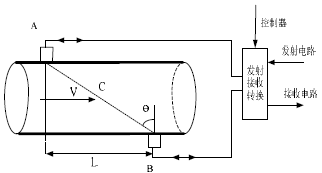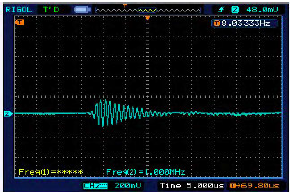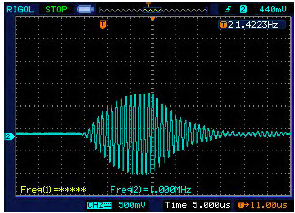1 Introduction Ultrasonic flow detection technology makes it possible to measure the velocity of the flow by modulating the velocity of the ultrasonic waves of the fluid being measured. In recent years, with the advent of digital signal processing technology, large-scale digital circuits and the emergence of new types of ultrasonic transducers, ultrasonic flow detection technology has made great strides. Compared with the traditional flowmeter, the ultrasonic flowmeter solves the problems of large diameter, large flow, and difficulty in measuring the flow of all kinds of open and underflow liquids. At the same time, it can measure liquids, gases, and even liquids of two-phase media. Flow, no requirement for measuring medium. With the advantages of low pressure drop, low energy consumption and high measurement accuracy, it is gradually replacing the mechanical flowmeter. However, when ultrasonic waves are used for small-diameter flow measurement, because the time for the ultrasonic wave to pass through the measured liquid is very short, useful measurement signals are easily submerged by clutter, which affects the measurement accuracy of the flow rate. For the above problems of small-diameter ultrasonic flow detection, through the improvement of hardware circuit design and software algorithms, the problem of measurement accuracy is solved. 2 Ultrasonic flowmeter transducer drive and signal processing Ultrasonic flow meter detection methods mainly include: time difference method, Doppler effect method, correlation method, noise method, beam offset method, etc. The time difference method ultrasonic flow depends on the ultrasonic signal propagated to the medium, in the flowing medium will With the medium flow velocity information, the ultrasonic echo sensor receives the ultrasonic echo signal with the flow velocity information to the circuit board by means of the ultrasonic receiving sensor, and after a series of signal processing, the measured flow rate or flow rate of the medium is obtained. (1) How the time difference method ultrasonic flow meter works The key to time difference method measurement is to be able to obtain high-precision time measurement parameters. In recent years, with the continuous appearance of high-speed time counting processing chips, measurement accuracy of tens of picoseconds has become possible, which is used for small aperture for time difference method. Ultrasonic flowmeters provide metering assurance. Figure 1 shows the basic principle of time-difference ultrasonic flow measurement. Figure 1 principle of ultrasonic flow measurement The two ultrasonic probes A and B can both transmit and receive. When the probe A is transmitted and the B receives, the ultrasonic wave propagates in the fluid in the downstream, and the speed of the ultrasonic wave is accelerated to measure the forward flow time; Speed ​​will slow down. In the time difference method, the downstream propagation time t1 is: The countercurrent propagation time t2 is: The time difference Δt between the forward and backward flows is: Available: Where C is the speed of sound of the ultrasonic wave in the liquid; L is the distance between the two transducers; V is the average flow velocity in the direction of the central axis of the pipe; θ is the incident angle of the ultrasonic wave into the liquid; Additional time. (2) Drive control of ultrasonic transducer In the ultrasonic flow measurement, the transducer is first driven, and the excitation transducer generates oscillation and emits an ultrasonic signal. The following is the excitation of the transducer using one drive pulse, ten drive pulses, and fifteen drive pulses, respectively. Source, Fig. 2 is the waveform received by the transducer at the receiving end during 1 drive pulse. It can be seen that when a pulse is driven, the received waveform is relatively weak and the waveform is very irregular. Figure 3 shows the waveforms received by the receiver transducer when there are 10 drive pulses. The shape of the waveform is significantly improved. Figure 4 shows the waveforms received by the receiver transducers for 15 drive pulses. Figure 2 1 drive pulse receiving wave Figure 3 10 pulse reception waveform Figure 4 15 pulse reception waveform It can be seen from the above several graphs that when the 15 pulses are received, the waveform received by the transducer is a more standard sine wave, and the amplitude is larger. The GP2 can emit a maximum of 15 driving pulses. Therefore, 15 driving pulses are selected.
Ramie Fiber Packing:Highest quality ramie fiber impregnated with light-colored, special PTFE and inert lubricant during square plaiting operation. It can prevent product contaminated. Low maintenance, easy-to –control, it is not harsh on shafts and stems. Material Flax is also available on request.
Construction:
Ramie packing with silicon Rubber Core.High elastic silicon core can absorb vibration, to control leakage.
Application:
For pumps, refiners, filters and valves in the brewing and beverage industry, shipbuilding and other fields. Especially resistant to abrasive media in the paper industry.
Ramie Gland Packing,Ramie Gland Filler,Ptfe Gland Packing Material,Ramie Fiber Packing Hengshui Aohong Technology Co.,Ltd. , https://www.aohong-sealing.com






